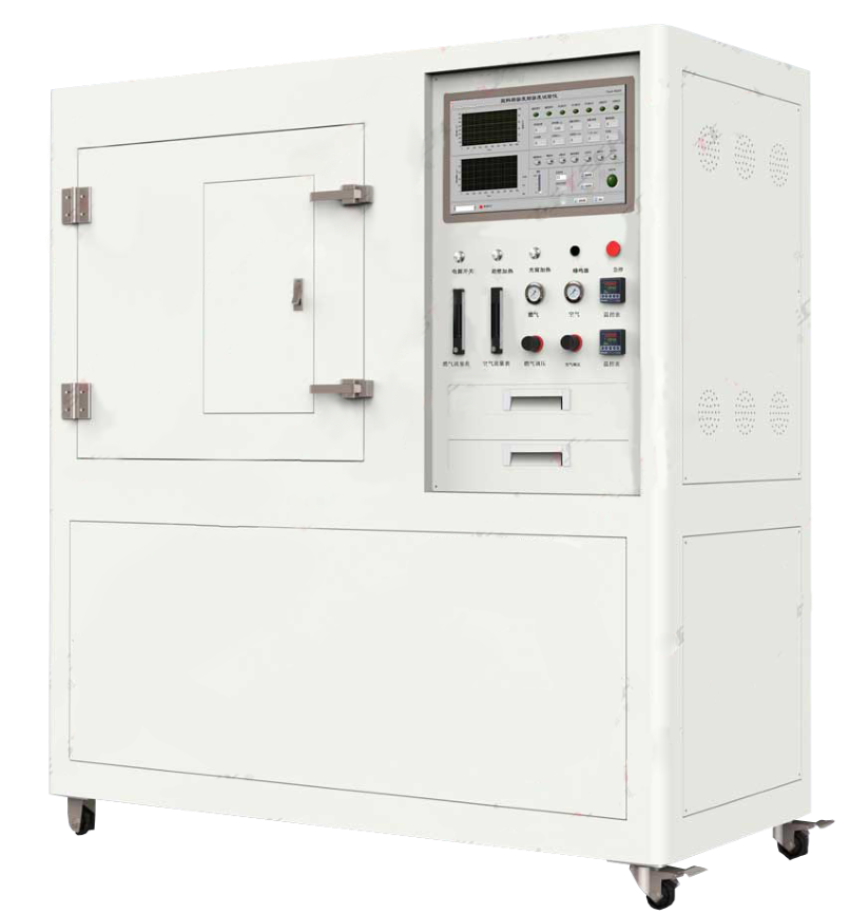
Operation method of plastic smoke density meter
2024/12/25
The main principle of smoke density measurement is that in a particular space, the cable or material produces smoke under specific combustion or radiation conditions, and the light beam penetrating through the smoke will produce attenuation. Measuring the light transmittance and calculation will get the optical density and smoke density.
As a modern technology enterprise integrating R&D, manufacturing, sales, training, and services, Standard Sales Group (Hong Kong) Co., Ltd. is committed to delivering more testing instruments to the market, providing testing instruments for textiles, leather, combustion, automotive interior and exterior trims, material environmental climate aging, etc., and non-standard customization is also acceptable. Targeted tests can be carried out according to customer requirements before purchase to ensure that the purchased instruments are applicable.
Standards:
GB/T8323.2-2008: Plastics - Smoke generation - Part 2: Determination of optical density by a single-chamber test ISO 5659-1: Plastics - Smoke generation - Part 2: Determination of optical density by a single-chamber test ISO 5659-2: Plastics-Smoke generation-Part2: Determination of optical density by a single-chamber test.

Operation method:
1. Preparation stage
Check equipment: Ensure that all parts of the plastic smoke density meter are intact, especially key parts such as the test chamber, sample box, radiation cone, igniter, light transmission, and measurement device. At the same time, check whether the power supply, gas, and other connections are firm and reliable.
Calibrate equipment: Before the formal test, the smoke density measurement system needs to be calibrated to ensure the accuracy of the measurement results. The calibration steps include adjusting the intensity of the light source, checking the sensitivity of the photoelectric detection element, etc.
Prepare samples: Prepare plastic samples of appropriate size and quality according to the test requirements. Ensure that the sample surface is clean, free of stains, and meets the requirements of the test standard.
Set test parameters: Set the power, temperature range, radiation exposure, and other parameters of the heating cone according to the test standard (such as ISO 5659) and actual needs. At the same time, select the appropriate test mode (such as whether there is a forward flame, etc.).
2. Test stage
Install samples: Place the prepared samples horizontally or vertically in the sample box, ensuring that the distance between the sample and the radiation cone meets the requirements of the test standard. At the same time, close the sample box door and lock it.
Start the test: Turn on the power of the equipment and start the test program. During the test, the equipment will automatically complete the steps of ignition, heating, measurement, etc.
Observation and record: During the test, closely observe the sample's combustion and smoke generation. At the same time, record the key data, such as optical density, temperature, etc.
Safety monitoring: During the test, always pay attention to the safety status of the equipment to ensure that the equipment is within the normal operating range. If any abnormality is found, the test should be stopped immediately and appropriate safety measures should be taken.
3. Ending stage
Shut down the equipment: After the test, turn off the power supply and gas supply of the equipment. Wait for the equipment to cool to room temperature before proceeding with subsequent operations.
Clean up the site: Open the sample box door and take out the tested sample. At the same time, clean up the residue and smoke in the test room to ensure that the equipment is clean and tidy.
Analyze the data: According to the data recorded in the test, analyze the performance indicators of the sample such as smoke density. If necessary, the data can be imported into the computer for further processing and analysis.
Maintenance: Regularly maintain the equipment, including cleaning optical components, checking circuit connections, etc. Ensure that the equipment is in good working condition.
Previous: Application scenarios of surface flammability tester
N e x t : F150A Textile Flame Spread Tester Operation Steps



